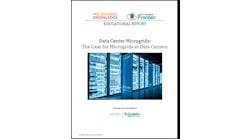Despite a growing focus on environmental sustainability, most data center operators are still not measuring their water or carbon impact or the impact of their e-waste disposal programs, according to new survey data from Uptime Institute.
Uptime’s annual Global Data Center Survey for 2021 found that 82% of data center managers monitored tracked electricity usage and 70% tracked PUE (Power Usage Effectiveness, a leading energy efficiency metric), primarily because power is the single largest operational facility cost.
That practice doesn’t hold true for environmental metrics, as Uptime found that only about half of managers track water usage at any level, and only a third monitor their carbon impact or e-waste. The findings are at odds with the messaging from the industry’s largest hyperscale operators and service providers, which are stepping up their focus on sustainability.
- Facebook recently announced plans to be water-positive by 2030, which builds on its existing goal for to reach net zero greenhouse gas emissions for its entire supply chain by that date.
- Google just unveiled an ambitious water stewardship target to replenish 120% of the water it consumes for its offices and data centers. Google has already committed to operate on 24/7 carbon-free energy in all its data centers by 2030.
- Microsoft intends to be carbon negative by 2030, eliminating all direct GHG emissions as well as those for its entire supply and value chain. That includes a plant to stop using diesel fuel in its data center generators by 2030
- Amazon Web Services (AWS) aims to power its operations with 100% renewable energy by 2025 and says it has “multiple initiatives underway to use water more efficiently and use less potable (drinking) water to cool our data centers.”
- Among multi-tenant operators, Digital Realty, Equinix, Iron Mountain and Sabey Data Centers have all committed to the Science-Based Targets initiative to reduce emissions to meet the goals of the 2015 Paris Agreement on climate change.
These commitments stand in stark contrast to Uptime’s finding that just 33 percent of data center managers are tracking carbon emissions for their IT operations and data centers. There’s an old saying in industry that “you can’t manage what you can’t measure.” If that’s true, climate impact is effectively unmanaged at two-thirds of data centers.
Disconnect on Climate Compliance
The Uptime Institute survey compiled data from more than 800 data center operators (including many leading enterprise brands), as well as 550 vendors and consultants, making it one of the most comprehensive studies on industry attitudes.
The results suggest a growing disconnect when it comes to environmental stewardship and ESG (environment, social and governance) compliance, with enterprises holding cloud platforms and service providers to levels of accountability that are seemingly difficult to apply to their on-premises operations.
If this trend continues, the best and fastest way to make progress on climate goals would be to accelerate the migration of workloads from on-premises data centers to more efficient facilities operated cloud platforms and purpose-built service providers.
The Uptime data suggests that although most respondents see power usage as a business concern, they don’t see water and waste as a similar priority.
“Why don’t more track water use?” Uptime writes. “Most say it’s because there is no business justification, which suggests a low priority for management — be it cost, risk or environmental considerations. Yet even some of those who do not track say they want to reduce their water consumption.”
In reality, the growing corporate focus on ESG commitments will make an impact beyond just power. Early examples are seen in the controversies around data center water usage in drought-stricken markets like Phoenix, where new projects by Microsoft and Facebook have faced public scrutiny. In response, the companies have invested heavily in local water conservation initiatives.
“External and regulatory pressure may soon begin to drive down water use,” Uptime notes. “A growing number of municipalities will permit new data center developments only if they are designed for minimal or near-zero direct water consumption. These types of rules will heavily influence facility design and product choices in the future, mandating cooling equipment that uses water sparingly (or not at all).”
‘Complex Challenges’ for Data Center Operators
Andy Lawrence, the Executive Director of Research at Uptime Institute, said the survey reflects “the many complex challenges data center owners and operators are facing today.”
“The stakes have never been higher when it comes to outage prevention, environmental sustainability and overall performance,” said Lawrence. “That’s why organizations must continue to carefully reassess their mission-critical digital infrastructure and operations to minimize service delivery risk and maximize resiliency.”
Reliability is always a primary focus of research from Uptime, which as its name suggests is known for providing guidance on uptime and is known for its Tier system of evaluating data center operational risk and performance.
Uptime says the number of data center outages has declined, but the consequences continue to worsen. In 2021, 69% of data center owners and operators reported experiencing some form of outage (regardless of severity) in the past three years, a noteworthy decrease from 78% for the three years to 2020. About half of those outages are brief and have few consequences, but the remaining half cause substantial financial, operational and reputational damage.
When outages are seriously, they are increasingly costly. The survey found that 62% of outages that respondents classified as significant, serious or severe cost more than $100,000 (an increase from 56% in 2020), while 15% of these outages cost over $1 million.
As in previous Uptime surveys, on-site power equipment like UPS systems and generators were the most common cause of outages in 2021, followed by cooling failures, software or IT system errors and network issues. The results show that 79% of data center outages involve human error, and that staff failing to execute or incorrect processes and procedures are the top two issues contributing to those incidents. Three out of four owners and operators believe their most recent outage was preventable, a 16% increase over 2019.






